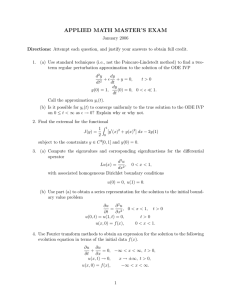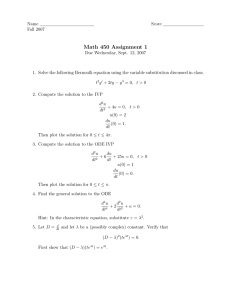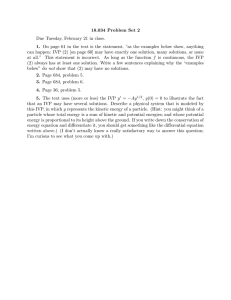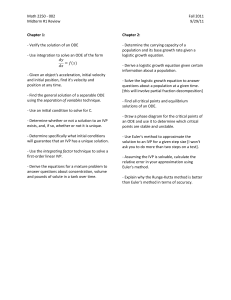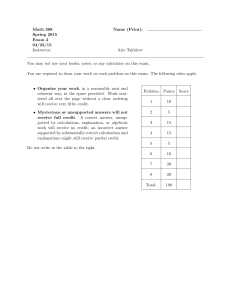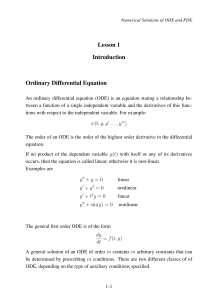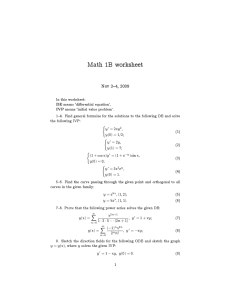Math 450 Final Exam
advertisement
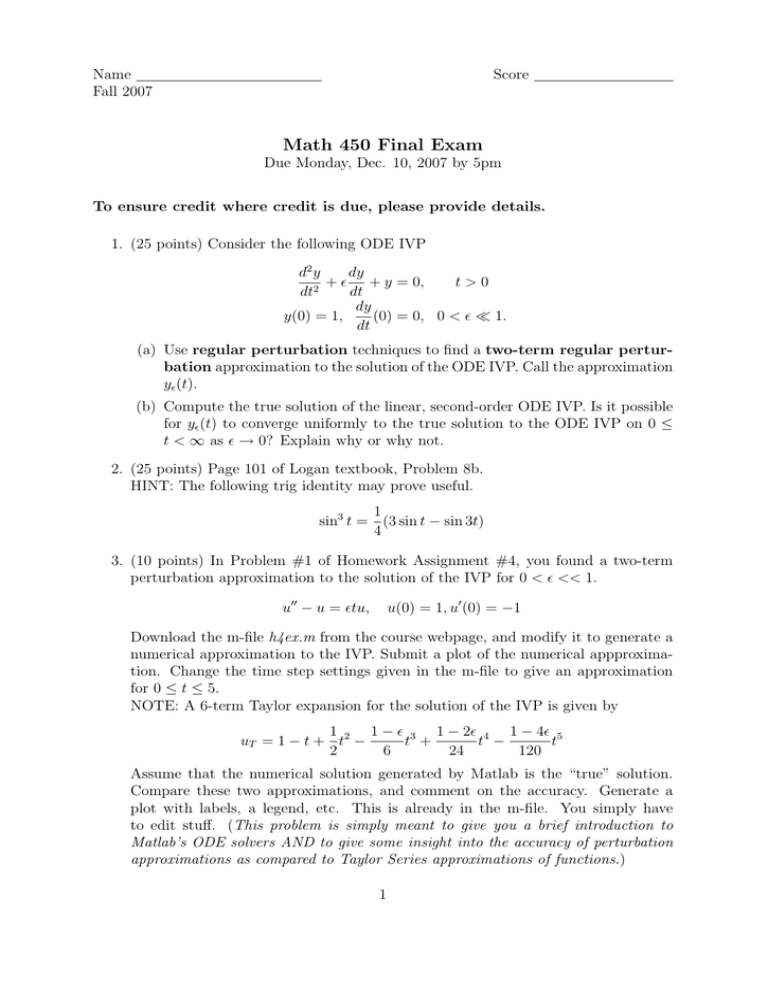
Name Fall 2007 Score Math 450 Final Exam Due Monday, Dec. 10, 2007 by 5pm To ensure credit where credit is due, please provide details. 1. (25 points) Consider the following ODE IVP d2 y dy + + y = 0, t>0 2 dt dt dy y(0) = 1, (0) = 0, 0 < 1. dt (a) Use regular perturbation techniques to find a two-term regular perturbation approximation to the solution of the ODE IVP. Call the approximation y (t). (b) Compute the true solution of the linear, second-order ODE IVP. Is it possible for y (t) to converge uniformly to the true solution to the ODE IVP on 0 ≤ t < ∞ as → 0? Explain why or why not. 2. (25 points) Page 101 of Logan textbook, Problem 8b. HINT: The following trig identity may prove useful. 1 sin3 t = (3 sin t − sin 3t) 4 3. (10 points) In Problem #1 of Homework Assignment #4, you found a two-term perturbation approximation to the solution of the IVP for 0 < << 1. u00 − u = tu, u(0) = 1, u0 (0) = −1 Download the m-file h4ex.m from the course webpage, and modify it to generate a numerical approximation to the IVP. Submit a plot of the numerical appproximation. Change the time step settings given in the m-file to give an approximation for 0 ≤ t ≤ 5. NOTE: A 6-term Taylor expansion for the solution of the IVP is given by 1 1 − 3 1 − 2 4 1 − 4 5 uT = 1 − t + t2 − t + t − t 2 6 24 120 Assume that the numerical solution generated by Matlab is the “true” solution. Compare these two approximations, and comment on the accuracy. Generate a plot with labels, a legend, etc. This is already in the m-file. You simply have to edit stuff. (This problem is simply meant to give you a brief introduction to Matlab’s ODE solvers AND to give some insight into the accuracy of perturbation approximations as compared to Taylor Series approximations of functions.) 1 4. (10 points) Page 101 of Logan textbook, Problem 5j. 5. (30 points) Page 134 of Logan textbook, Problem 4. Note that this problem is very similar to the example in Section 2.4.1 of your text AND you already did some of the dimensional analysis in Problem #6 of your midterm. 2
